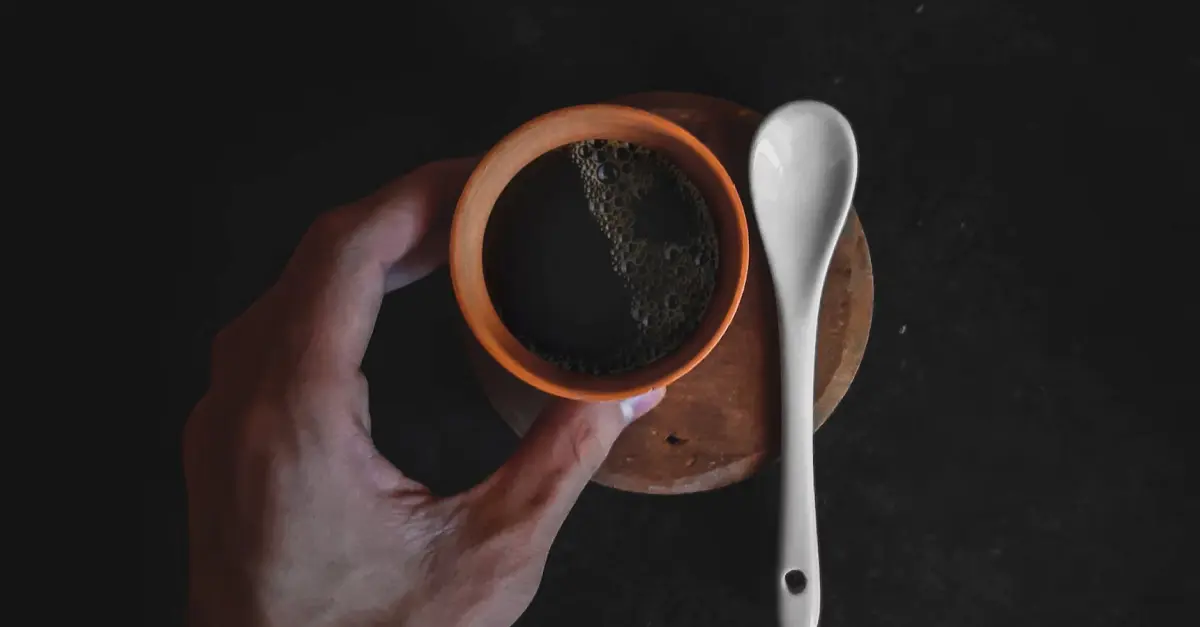What Is The Cherry Part Of A Coffee Bean?The cherry part of the coffee bean refers to the entire coffee fruit or stone fruit. The coffee bean or cherry is the seed that grows on the coffee plant and is the actual source of coffee. The coffee cherry gets its name from its appearance, owing to that of an actual cherry.
Now, when the two seeds inside a coffee cherry are roasted, they are known as whole coffee beans. The coffee cherry is composed of two main parts, i.e. pericarp (outer part) and seed (found inside the cherry).
 ### What Are The 7 Parts Of A Coffee Bean?As mentioned above, the coffee fruit or bean is divided into two main parts, i.e. pericarp and seeds. Further, these two main parts also come with sub-categories, bringing the total parts of the bean anatomy to seven (7).
### What Are The 7 Parts Of A Coffee Bean?As mentioned above, the coffee fruit or bean is divided into two main parts, i.e. pericarp and seeds. Further, these two main parts also come with sub-categories, bringing the total parts of the bean anatomy to seven (7).
PericarpThe pericarp refers to the external part of the bean and is divided into four sub-parts. These include the skin (exocarp), pulp (mesocarp), mucilage, and parchment (endocarp).
*The Skin (Exocarp)*The exocarp is the outermost part of the coffee cherry AKA its skin or peel. The skin is perhaps the most obvious part of the coffee cherry and the easiest to identify. This outer skin is made of a single cell layer, known as parenchyma cells. The primary role of the skin is to take up water and also contain chloroplast (responsible for carrying photosynthesis).
All coffee plants start with a green hue skin due to the chloroplast. But, as the fruit matures and the chloroplast disappears, you will notice the color change. The skin can take up a red to yellow hue, depending on the range of the coffee and its color pigments.
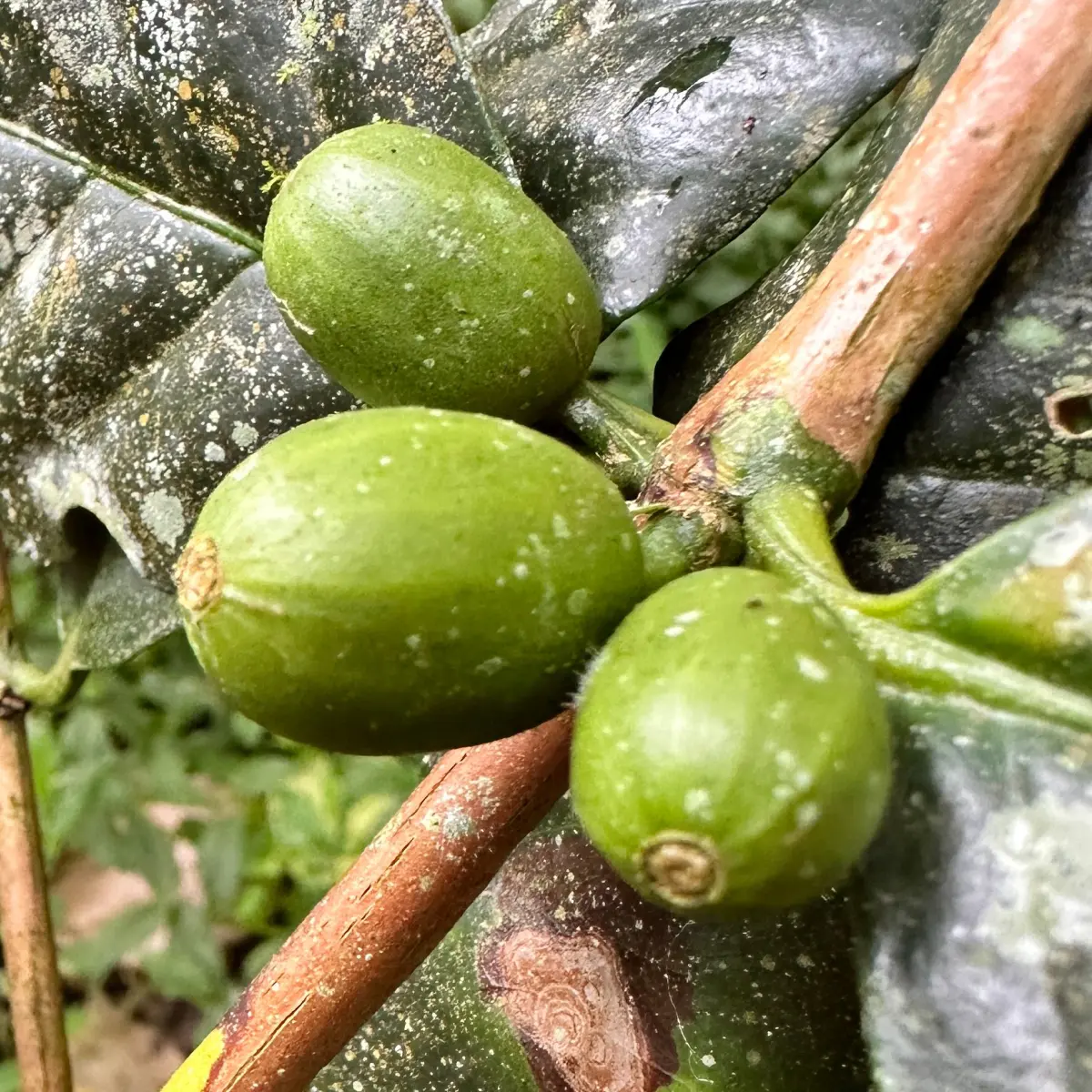 #### The Pulp (Mesocarp) & MucilageThe mesocarp is the pulp of the coffee cherry and is usually combined with mucilage or the flesh of the coffee cherry as one.** This part of the cherry is immediately underneath the skin. **On the other hand, flesh or mucilage is usually hard during the early stage and transitions into a softer form as the coffee cherry matures.
#### The Pulp (Mesocarp) & MucilageThe mesocarp is the pulp of the coffee cherry and is usually combined with mucilage or the flesh of the coffee cherry as one.** This part of the cherry is immediately underneath the skin. **On the other hand, flesh or mucilage is usually hard during the early stage and transitions into a softer form as the coffee cherry matures.
This is because by then, the cherry secretes an enzyme called a pectolytic enzyme, breaking down pectin chains. This, in turn, forms an insoluble hydrogel rich in sugars and pectins. Now, in the real world, the mucilage concentration against water in a coffee cherry increases at higher altitudes.
**This explains why coffee that has undergone a dry technique is usually sweeter and even sweeter when grown in **higher altitudes. This is because the dry technique during post-harvest drying allows the beans to retain the entire pericarp. On the other hand, coffee dried via a damp processing technique loses its mucilage through fermentation.
*The Parchment (Endocarp)*Also known as the innermost part of the pericarp, the parchment is simply the hull covering and protecting the coffee bean or seed. The parchment is made of several sclerenchyma cells. Unlike the mucilage, this layer hardens as the coffee cherry matures. This, in turn, allows it to determine the size of the coffee bean or seed. Arabica beans or seeds tend to be much smaller than robusta ones.
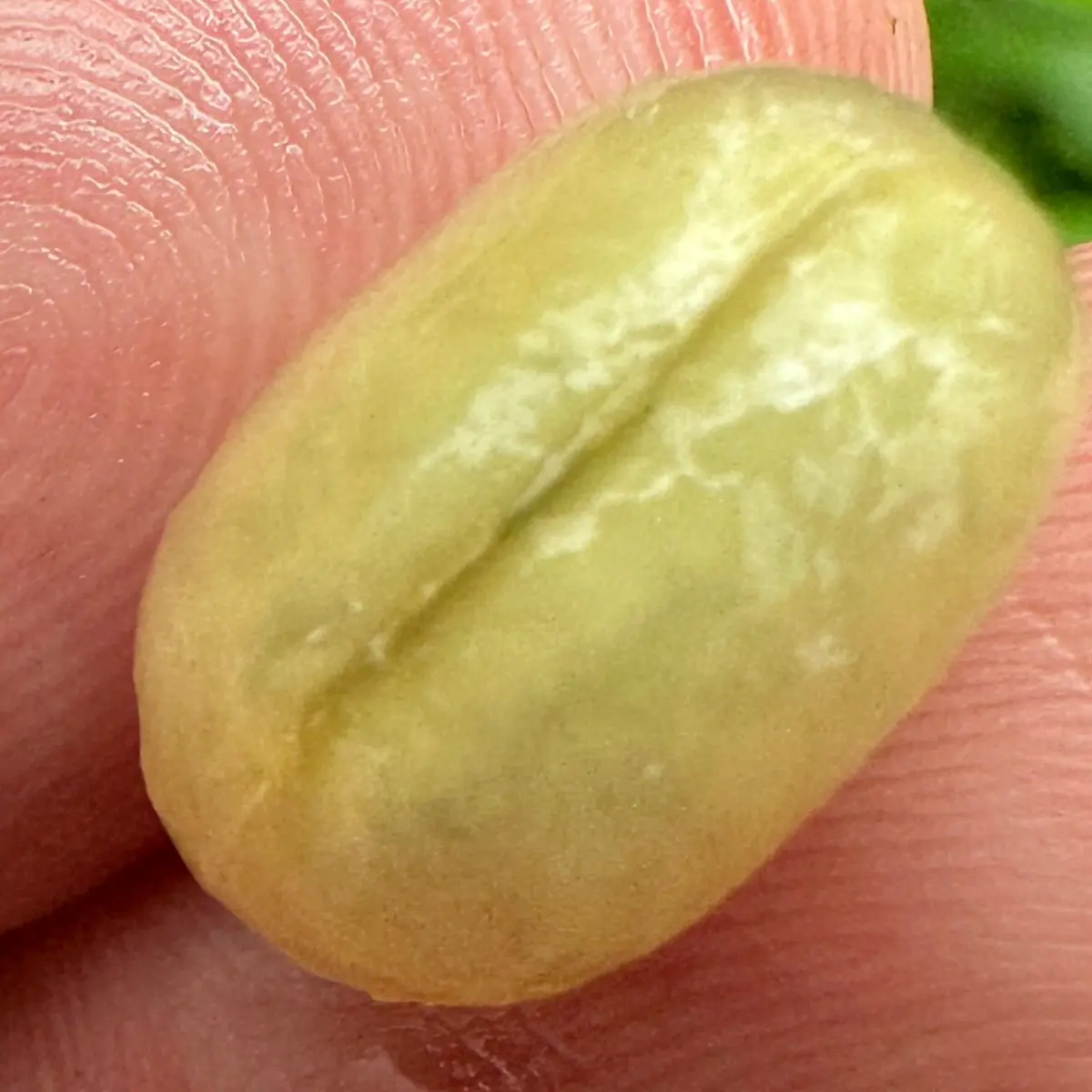 ### SeedsThe second main part of the coffee cherry is the seed. The seed or bean is made of three main parts, i.e., silver skin, endosperm, and embryo.
### SeedsThe second main part of the coffee cherry is the seed. The seed or bean is made of three main parts, i.e., silver skin, endosperm, and embryo.
Silver SkinAlso known as the spermoderm or perisperm, this is the outermost layer of the seed or bean.** The silver skin is part of the ovule of the seed and is completely shed off after roasting (during the chaffing part). **The silver skin plays a role in protecting the seed during growth. The silver skin typically falls off due to the expansion of the bean during the roasting process, making it a by-product of roasting.
EndospermThe two final parts of the seed, the endosperm, and embryo are the non-visible part of the coffee cherry. The endosperm is a reserve tissue in the seed made of a single type of tissue. Now, the endosperm is one of the two parts of the seeds that make it to the end product.** This part of the coffee seed or bean also plays an important role in determining the flavor and aroma of coffee. **
The endosperm contains soluble components such as caffeine, niacin, trigonelline, and 18 or more types of chlorogenic acids, saccharides/sugars, proteins, minerals, and carboxylic acids. On the other hand, insoluble components include polysaccharides, cellulose, lignin, hemicelluloses, lipids/fats, proteins, and minerals.
Now, remember during the roasting process, these compounds are oxidized through a series of Maillard reactions. These compounds play a role in determining the overall flavor and taste based on the composition, chemical structure, the coffee’s growth origin, and of course, the roast level.
EmbryoThe innermost part of the seed, the embryo, is made of the hypocotyls and 2 cotyledons. During germination, the hypocotyl expands and pushes the seed above the ground. On the other hand, the cotyledons remain underground, allowing for new ones to develop.
While the embryo remains inside the seed even after roasting, it plays an important role in housing the genetic material for growth when the coffee is beginning to grow.
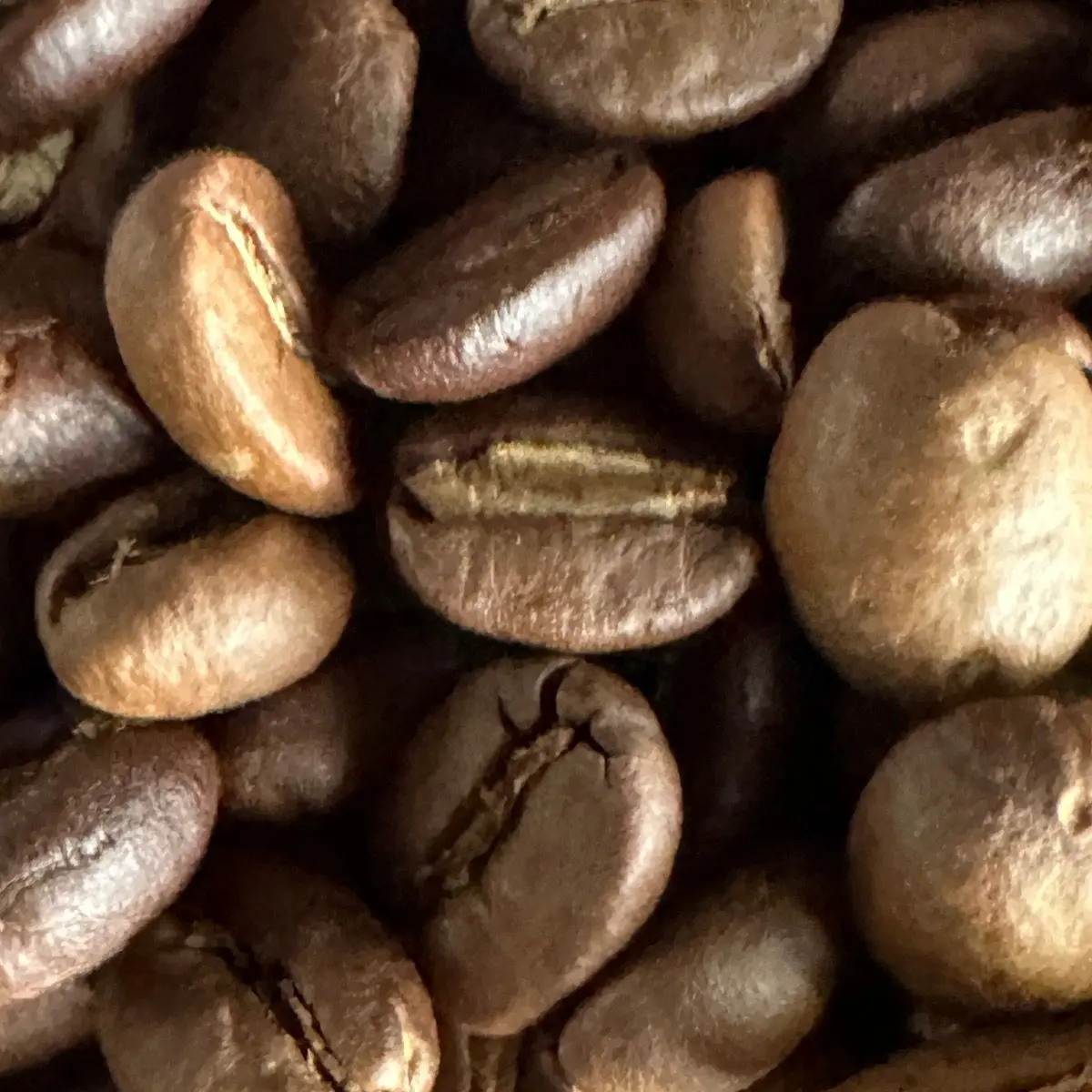 ## What are the Elements Composing a Coffee Bean?The coffee bean contains a range of compounds – each playing an important role. Primarily, understanding the chemical composition of coffee beans allows you to appreciate the beans more.
## What are the Elements Composing a Coffee Bean?The coffee bean contains a range of compounds – each playing an important role. Primarily, understanding the chemical composition of coffee beans allows you to appreciate the beans more.
As you handle the coffee from farm to roastery & brewery, understanding the chemical composition allows for better handling of the beans. Moreover, the chemical composition can be used as a guide when experimenting with different roasts and blends.
 ### CarbohydratesCarbohydrates in a coffee bean include smaller soluble and larger insoluble polymers. Soluble carbohydrates include monosaccharides, fructose, glucose, galactose, and traces of arabinose. Oligosaccharides include sucrose, raffinose, and stachyose while non-soluble polysaccharides include polymers of galactose, mannose, arabinose, and insoluble glucose.
### CarbohydratesCarbohydrates in a coffee bean include smaller soluble and larger insoluble polymers. Soluble carbohydrates include monosaccharides, fructose, glucose, galactose, and traces of arabinose. Oligosaccharides include sucrose, raffinose, and stachyose while non-soluble polysaccharides include polymers of galactose, mannose, arabinose, and insoluble glucose.
Sugars in the coffee beans are responsible for enhancing the sweetness of the coffee. They also come in handy during the roasting process, aiding in the coffee’ Caramelization. Depending on the concentration, carbohydrates in coffee also participate in functions such as aroma binding, boosting extract viscosity, sedimentation forming, and foam stabilization.
Lipids and Fatty AcidsLipids and fatty acids in coffee primarily include linoleic acid and palmitic acid. Other small quantities include triacylglycerols, diterpene esters, diterpenes, triterpene esters, and sterols. Fatty acids and lipids maintain the aroma of the coffee during storage. If you store coffee in oxygen-rich conditions, the lipids gradually oxidize, changing the flavor and aroma of the coffee.
Free Amino AcidsThese include various amino acid types and proteins. During roasting, amino acids and proteins interact with carbohydrates in the Maillard reaction. These compounds play a role in harnessing the aroma and flavors of the roasted bean.
AcidsA coffee bean contains acids in volatile and nonvolatile forms. Volatile acids include formic and acetic acids. **The nonvolatile aliphatic acid group includes lactic, citric, malic, tartaric, pyruvic, and quinic acids. **The bean also contains higher fatty acids, succinic, and glutaric acids.
Chlorogenic Acid Chlorogenic acids play a role in determining flavor and aroma during roasting. These acids make up about 6% of the coffee bean components. Chlorogenic acid includes lipids, lignin, wax, and different quinic acid polymers. Different coffee bean varieties contain varying amounts of acid. Chlorogenic acid in coffee plays an important role in determining taste.
MineralsCoffee beans contain a variety of minerals in varying percentages, based on different factors. **The beans contain a higher amount of potassium, calcium, and magnesium. **Other elements in traces include phosphate and sulfate. Coffee from different regions also contains different mineral concentrations. Minerals in the coffee also play a role in extracting the true flavors of the bean.
CaffeineCaffeine in the bean includes minerals, trigonelline, and traces of theophylline and theobromine. As part of the caffeine group, green coffee contains trigonelline (N-methyl nicotinic acid) at up to 0.6%. This percentage is decomposed by 50% during the roasting process.
Caffeine is the most popular ingredient in the coffee bean. It is popular for its neurological effects, stimulating the central nervous system, boosting blood circulation, and even, increasing respiration. The reason why you may taste a slightly bitter taste in coffee is due to caffeine.
In fact, caffeine makes up about 10% of the coffee bean component. As coffee is roasted, the caffeine level drops. This explains why light roasted beans contain a slightly higher caffeine content than dark roasted beans
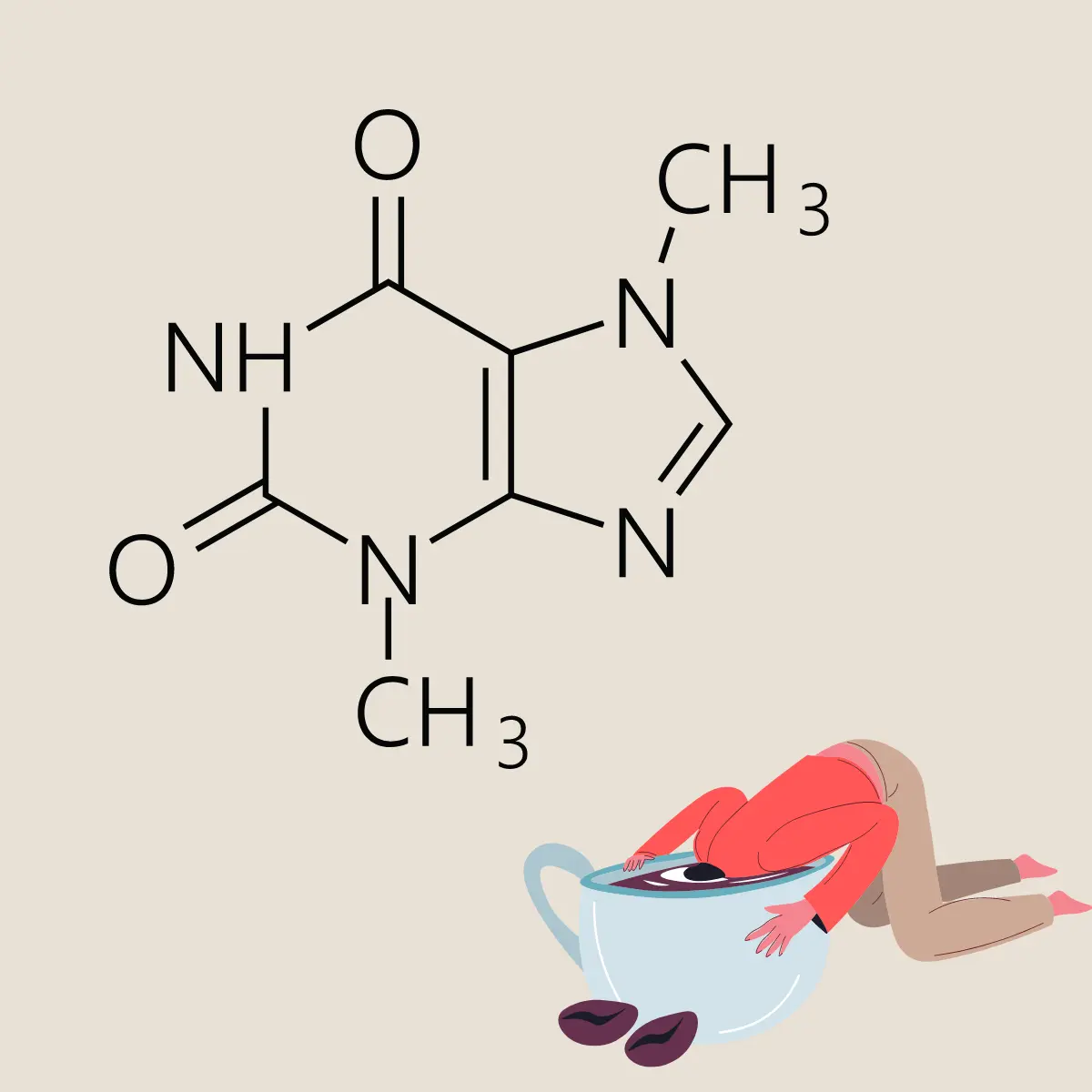 ### Aroma ComponentIn addition to the chemical components, the coffee bean also contains an aroma profile. As expected, it varies for different coffee beans. These include sweet and caramel, smoky, toasty, or earthy.
### Aroma ComponentIn addition to the chemical components, the coffee bean also contains an aroma profile. As expected, it varies for different coffee beans. These include sweet and caramel, smoky, toasty, or earthy.
Why is it Important to Understand the Anatomy and Chemistry of a Coffee Bean?Understanding the anatomy and chemistry of coffee beans goes beyond trivia!** This information comes in handy for coffee dealers, whether buyers or roasters trying to perfect a blend. For instance, learning about the different sizes of coffee can help you categorize them into grades.**
The coffee grade is an extremely important factor to consider when picking the best quality coffee. Similarly, coffee exporters and large roasters also conduct composition tests on coffee. This gives them a full report on the actual coffee bean composition, allowing them to better devise the best roasting plan for the beans.
Now, back to the coffee bean size – bean size directly relates to the grade. The grade is, in turn, affected by the coffee’s origin, elevation, and type. For instance, robusta beans are naturally larger than Arabica beans, which grow in high altitudes.
Because of its larger size, robusta usually has higher caffeine content (up to twice as much as Arabica). However, due to the higher caffeine content, robusta tends to have a slightly bitter and earthier taste and has a lower value than Arabica.
Nonetheless, its high caffeine content and rich crema have made this variety popular for making espresso. On the other hand, the more delicate Arabica beans thrive in high altitudes, giving them a higher mineral content. While its high altitude growth makes it a high maintenance variety, its rich mineral content makes it more flavorful. This explains why Arabica beans tend to be more costly than robusta beans.
 ## Are there Toxic Elements in Some Coffee Beans?There may be toxic elements in some coffee beans. But, there is a catch. **Some of the most common toxic elements in your coffee beans include mycotoxins, such as aflatoxin and ochratoxin, and acrylamide. **Starting with acrylamide, this toxic element is usually formed in trace elements during the roasting level. Unfortunately, there’s really no way to 100% avoid it unless you consume green coffee, instead.
## Are there Toxic Elements in Some Coffee Beans?There may be toxic elements in some coffee beans. But, there is a catch. **Some of the most common toxic elements in your coffee beans include mycotoxins, such as aflatoxin and ochratoxin, and acrylamide. **Starting with acrylamide, this toxic element is usually formed in trace elements during the roasting level. Unfortunately, there’s really no way to 100% avoid it unless you consume green coffee, instead.
Mycotoxins come in several varieties. Aflatoxin B1, for example, is a known carcinogen found in some chemical pesticides. Purchasing non-sustainable and non-organic coffee beans poses the risks of containing this myocotoxin. The best way to avoid it is by investing in traceable sustainable and ethical coffee.
On the other hand, mycotoxin, ochratoxin can also be found in coffee beans. The good news is that this toxin can be entirely avoided. Ochratoxin is formed by fungi, as a result of mold. **Mold formation in coffee beans is usually associated with poor storage. **When exposed to light, air, moisture, or heat, coffee beans degrade, creating the perfect environment for fungal activity.
To avoid the likelihood of ending up with moldy coffee, purchase from a trusted roastery with trusted reviews. You should also ensure the coffee is freshly roasted. Small-batch roasteries typically roast small batches they can dish out in a short period before roasting more coffee. Alternatively, you can purchase green coffee beans and do the roasting yourself.
ConclusionUnderstanding the anatomy and chemistry of coffee beans ultimately influences your success in the business. With this knowledge, you don’t only understand the flavor and aroma development of the coffee.
It also makes it easier to choose coffee based on grades and other physical properties. While it may seem complex at first, the chemistry and anatomy of coffee beans are perhaps the single most important foundational information for understanding everything about coffee.


